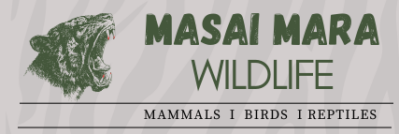- Common Name: Ichneumon Mongoose
- Scientific Name: Herpestes ichneumon
- Swahili Name: Nguchiro mkubwa
- Maasai Name: Ekisherini
- Size:
- Head-Body Length (HBT): 110 cm (43 inches)
- Gestation: 10 weeks
- Recognition: The Ichneumon Mongoose is one of the largest mongooses, with a grizzled grey coat, short black legs, and a dark face. Its long, black-tipped tail often trails behind it, occasionally raised. This mongoose has an otter-like appearance and is often seen with its nose close to the ground, moving in a characteristic “slinking” manner.
Habits and Behavior
- Diurnal and Social: Unlike many other mongoose species, the Ichneumon Mongoose is diurnal, meaning it is active during the day. It is often encountered in pairs or small family groups of up to seven individuals. Males typically have several females within their home range, and the young are sometimes seen traveling in a line, following the mother, creating a “mongoose train” effect.
- Always on the Move: Ichneumon Mongooses are known for their active lifestyle. They are almost always on the move, trotting through their territory with their characteristic slinking gait, nose low to the ground, as they search for food. Their constant motion and nose-to-ground behavior make them excellent trackers, true to their name.
- Good Swimmers and Diggers: These mongooses are excellent swimmers and skilled diggers, often taking advantage of their proximity to water. They dig for food and use their strong claws to excavate burrows when necessary.
Diet
- Feeds on: The Ichneumon Mongoose has a varied diet, feeding on invertebrates, fruits, eggs, and small vertebrates. However, it has a particular fondness for large snakes, including the dangerous Spitting Cobra. This mongoose has evolved resistance to some snake venoms, making it a formidable predator in its habitat. They will also eat fish, further demonstrating their adaptability.
Habitat
- Where to Find: Ichneumon Mongooses are found in a variety of habitats within the Masai Mara, including short grasslands, open savanna, and dry acacia zones. However, they prefer areas close to water and dense scrub, where prey is abundant, and cover is available. This preference for being near water makes them a common sight around rivers or marshy areas.
Conservation Status
- IUCN Status: Least Concern. The Ichneumon Mongoose has a broad distribution across Africa and the Mediterranean region, with a stable population. Its adaptability to various habitats and its ability to thrive near human settlements help keep its conservation status secure. However, habitat loss and human encroachment could pose future threats in certain regions.
Unique Traits
- Tracking Behavior: The name “Ichneumon” comes from the Ancient Greek word for “tracker,” referencing this mongoose’s ability to track prey with its nose to the ground, a trait that earned it a place in ancient literature as a famed dragon hunter.
- Resistance to Venom: The Ichneumon Mongoose has developed a resistance to the venom of snakes such as the Spitting Cobra, allowing it to hunt and consume these dangerous reptiles with little risk to itself.
- Sociable Family Life: These mongooses are not only solitary hunters; they also exhibit strong social behaviors within family units, particularly in how the young follow the mother in a “mongoose train,” demonstrating cooperative and protective instincts.
Interesting Facts
- Mongoose Trains: Young Ichneumon Mongooses are sometimes observed traveling together, with each one connected to the other like a train, led by their mother. This behavior strengthens the bond within the group and ensures their safety while moving through the territory.
- Fearless Snake Hunters: Known for their ability to take down large and venomous snakes, the Ichneumon Mongoose has become a symbol of courage and tenacity in African folklore. Their agility and venom resistance make them highly effective snake hunters.
In conclusion, the Ichneumon Mongoose is one of the most remarkable species of mongoose in the Masai Mara. Its large size, fearless hunting habits, and sociable behavior make it a fascinating species to observe. Though currently listed as Least Concern, protecting its diverse habitat will ensure that this agile and bold predator continues to thrive in the wild.
